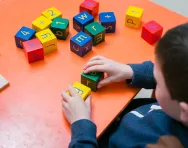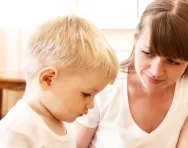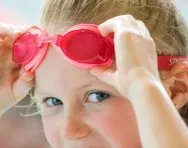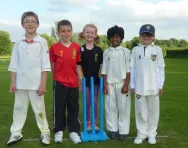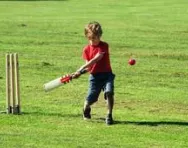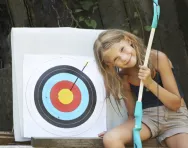Important update from TheSchoolRun
For the past 13 years, TheSchoolRun has been run by a small team of mums working from home, dedicated to providing quality educational resources to primary school parents. Unfortunately, rising supplier costs and falling revenue have made it impossible for us to continue operating, and we’ve had to make the difficult decision to close. The good news: We’ve arranged for another educational provider to take over many of our resources. These will be hosted on a new portal, where the content will be updated and expanded to support your child’s learning.
What this means for subscribers:
- Your subscription is still active, and for now, you can keep using the website as normal — just log in with your usual details to access all our articles and resources*.
- In a few months, all resources will move to the new portal. You’ll continue to have access there until your subscription ends. We’ll send you full details nearer the time.
- As a thank you for your support, we’ll also be sending you 16 primary school eBooks (worth £108.84) to download and keep.
A few changes to be aware of:
- The Learning Journey weekly email has ended, but your child’s plan will still be updated on your dashboard each Monday. Just log in to see the recommended worksheets.
- The 11+ weekly emails have now ended. We sent you all the remaining emails in the series at the end of March — please check your inbox (and spam folder) if you haven’t seen them. You can also follow the full programme here: 11+ Learning Journey.
If you have any questions, please contact us at [email protected]. Thank you for being part of our journey it’s been a privilege to support your family’s learning.
*If you need to reset your password, it will still work as usual. Please check your spam folder if the reset email doesn’t appear in your inbox.
Active and inclusive: PE provision for children with disabilities
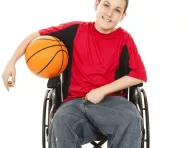
One of the most powerful outcomes of the London 2012 Olympic and Paralympic Games was the change in public perception of disabled people. The spectacular achievements of athletes like Ellie Simmonds, Sarah Storey and David Weir placed the focus squarely on ability rather than disability.


Boost your child's maths & English skills!
- Follow a weekly programme
- Maths & English resources
- Keeps your child's learning on track
The challenge arising from the Games is to ensure that disabled people of all ages now have the same opportunities to take part and succeed in sport as those who are non-disabled.
PE for children with disabilities: the success of adapted lessons
Despite the lack of specialist PE-trained staff in primary schools, catering for children with special needs is more about creativity than technical knowledge. “Teachers need to feel more confident and competent when dealing with disabled children,” said EFDS chief executive Barry Horne, “and not feel like they are fragile and going to break but that they are actually robust individuals who could join in the activity.”
“Parents of children with disabilities should always ask how lessons are adapted,” adds Elaine Burgess, a former PE teacher who now manages school sport projects in London. “It’s really not difficult for a teacher to work out how to use different equipment, facilities or even change the rules.”
For example:
- Children in wheelchairs can play team sports like football, hockey and cricket by adjusting the size of the pitch or court, or marking out zones where only wheelchairs are allowed.
- Boccia and the curling version known as new-age kurling can be played by all children together.
- Nets that are height-adjustable can enable children in wheelchairs to play volleyball or tennis.
- Soft or slower-moving balls can be incorporated for children who struggle with coordination.
- Players with different needs can use bats or rackets of varying sizes.
This philosophy is encapsulated in the English Federation of Disability Sport’s vision: ‘Disabled people are active for life’. However, there are 11 million disabled people in the UK while EFDS research shows that only two in ten disabled people in England currently describe themselves as active. Improving that figure requires an investment in access and opportunities, starting at school. After all, the school curriculum incorporates an access statement designed to ensure equality of opportunity. As Physical Education is a compulsory part of the curriculum at all Key Stages, every pupil should have the same access to PE, and disability should not be a barrier to inclusion.
Yet an EFDS survey carried out just after the Paralympic Games showed that 51 per cent of respondents said they do not enjoy their experiences of sport at school while 69 per cent said they prefer taking part in sport with friends outside the school gates.
Integrated sport sessions and specialist multi-sport clubs
Away from the classroom, sports governing bodies are now required to include participation by disabled young people in their ‘whole sport plans’, which are used by Sport England to allocate funding. This has had a further trickle-down effect into the level of provision at individual clubs, a number of which have now created integrated sections for disabled and non-disabled young players.
Specialist multi-sport clubs are also springing up: Disability Sports Coach Clubs in six London boroughs offer fun, accessible sessions for children and young adults. Many county sport partnerships around the UK have similar networks.
Another great resource is Parasport’s ‘find a club’ directory, which links to clubs in 27 different disability sports.
According to Jessica Neece, Camden’s Active for All project manager: “Some parents do not know so many adapted sports exist”. It’s a comment that gets to the very nub of the issue: there are sports out there which are ideal for children with all needs to get involved in. If the perception of disability no longer means inability, it should no longer mean inactivity either.
